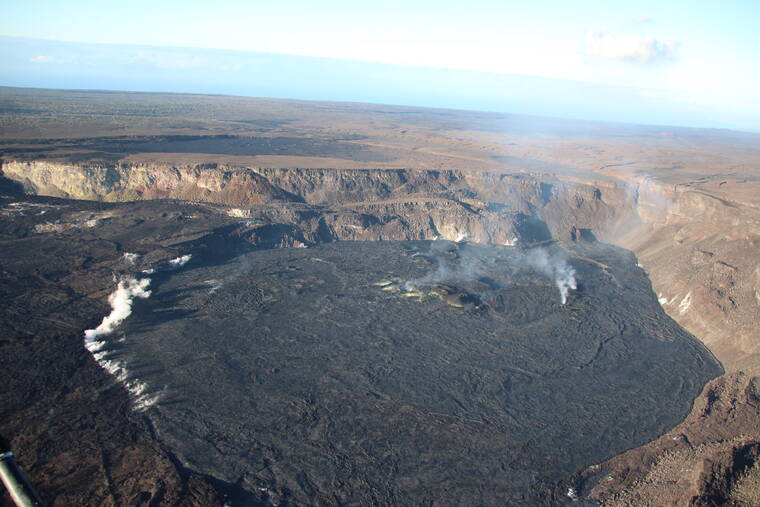Kilauea is “exhibiting signs of elevated unrest,” but alert levels for the volcano remain unchanged.
The U.S. Geological Survey’s Hawaiian Volcano Observatory reported today that the rate of earthquakes beneath Kilauea’s summit region has doubled in the past week, rising from an average of about 20 per day to more than 40.
While most of those quakes have registered as weaker than magnitude 2.0, the increased seismicity reached a crescendo Sunday with a magnitude-4.3 jolt that was felt throughout the island.
That quake and others on Sunday brought the total number of quakes in the last week to more than 100.
The heightened activity also was accompanied by an increase in the rate of ground tilting at the summit, although that rate has returned to its previous state since Sunday. Gas emissions from the volcano remain low.
HVO reports that these various changes indicate that magma is accumulating again beneath the surface of the summit region.
While there is no sign that an eruption is imminent, the elevated activity suggests that an eruption could occur with little to no warning, according to HVO.
The volcano alert level and aviation color codes for Kilauea remain at “Advisory” and “Yellow,” respectively. However, HVO starting on Tuesday will begin providing daily updates about the volcano’s activity.

